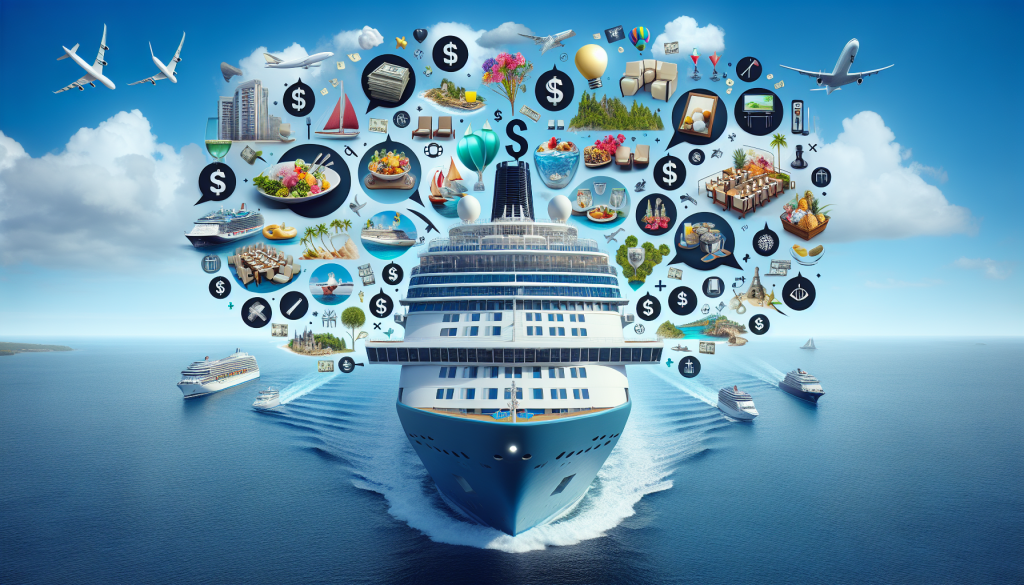Ah, the allure of cruising. The salty sea breeze, the swaying palm trees, the endless buffet… it’s no wonder that so many people dream of embarking on a cruise trip. But before you start packing your bags and weighing anchor, let’s talk about something that might float your boat – the average cost of a cruise trip. Whether you’re a budget-conscious traveler or a luxury-seeking adventurer, understanding the price range of a cruise vacation will help you plan your dream getaway with ease. So, without further ado, let’s set sail and explore the murky waters of cruise trip costs.
Factors Affecting the Cost of a Cruise Trip
When it comes to planning a cruise trip, there are several factors that can impact the overall cost. Understanding these factors can help you budget and make informed decisions. Below, I will outline and explain each factor in detail.

Duration of the Cruise
The duration of the cruise plays a significant role in determining the cost. Generally, the longer the cruise, the more expensive it will be. Short cruises, typically ranging from 1 to 5 nights, are usually more budget-friendly options. On the other hand, mid-length cruises of 6 to 9 nights and extended cruises of 10 nights or more tend to be pricier due to their longer itineraries.
Type of Cruise Line
Different cruise lines cater to various budgets and preferences. Luxury cruise lines, such as Crystal Cruises and Regent Seven Seas, offer top-notch amenities and a higher level of service, but they come with a higher price tag. Premium cruise lines, like Celebrity Cruises and Princess Cruises, offer a balance between luxury and affordability. Contemporary cruise lines, such as Royal Caribbean and Carnival Cruise Line, provide a more casual and family-friendly experience at a more reasonable cost.
Destination
The destination of your cruise can also impact the cost. Certain regions, like the Caribbean and Mediterranean, tend to be more popular and therefore may come with a higher price tag. Alaska cruises, with their breathtaking scenery and wildlife, can also be quite costly. On the other hand, cruises to less popular regions, such as the Baltic Sea or South America, may offer more affordable options.

Time of Year
The time of year you choose to go on a cruise can greatly affect the cost. Peak seasons, such as summer and holidays, are generally more expensive due to the high demand. Shoulder seasons, which occur just before or after the peak season, can often provide more affordable rates while still offering favorable weather and fewer crowds. Off-season cruises, during less popular months, tend to be the most budget-friendly but may come with some drawbacks, such as less favorable weather or limited onboard activities.
Cabin Type
The type of cabin you choose can significantly impact the cost of your cruise. Inside cabins, which have no windows and are typically located on the lower decks, are usually the most affordable option. Oceanview cabins, with a window or porthole for natural light, come at a slightly higher cost. Balcony cabins, offering your own private outdoor space, tend to be more expensive. For a more luxurious experience, suites or penthouses provide the utmost comfort and amenities but come with a premium price tag.
Onboard Amenities
The onboard amenities available on a cruise ship can also affect the overall cost. Some cruise lines offer all-inclusive packages that include dining, drinks, and selected activities. These packages usually come with a higher upfront cost but can provide excellent value for money. Specialty dining packages, drink packages, spa and wellness packages, internet packages, and fitness classes and personal training sessions are additional amenities that may come at an extra cost.
Excursions and Activities
Participating in excursions and activities during your cruise can add to the overall cost. Shore excursions, which are organized tours or activities at the ports of call, can range from cultural and historical tours to water sports and adventure activities. Entertainment and shows onboard the ship, spa and wellness treatments, and even golfing and sports activities can also come with additional charges. It is essential to consider these costs when planning your cruise budget.
Gratuities and Service Charges
Most cruise lines will include gratuities and service charges in their pricing. These charges typically cover gratuities for the onboard staff, such as room stewards, waitstaff, and bartenders. It is important to be aware of these charges as they can add a significant amount to the overall cost of your cruise. Be sure to check the cruise line’s policy on gratuities and factor it into your budget.
Travel Insurance
While travel insurance is not a mandatory expense, it is highly recommended to protect your investment and provide peace of mind. The cost of travel insurance can vary depending on factors such as your age, the duration of the cruise, and the coverage you choose. It is advisable to obtain travel insurance that includes medical coverage, trip cancellation/interruption insurance, and baggage protection.
Additional Expenses
In addition to the above factors, there are several other expenses to consider when planning a cruise trip. These include transportation to the port of departure, pre- and post-cruise accommodations, airfare, visas and travel documents (if necessary), souvenirs and shopping, dining and beverages (excluding onboard packages), and laundry and dry cleaning services. These expenses can vary greatly depending on personal preferences and circumstances.
By understanding the factors that affect the cost of a cruise trip, you can plan your budget accordingly and ensure an enjoyable and stress-free vacation. Remember to research and compare prices, consider your priorities, and make informed decisions to get the best value for your money. Happy cruising!

